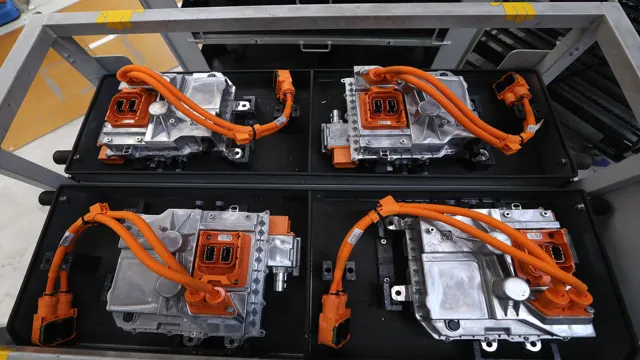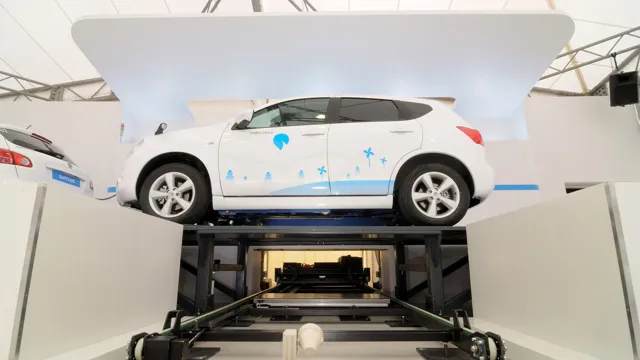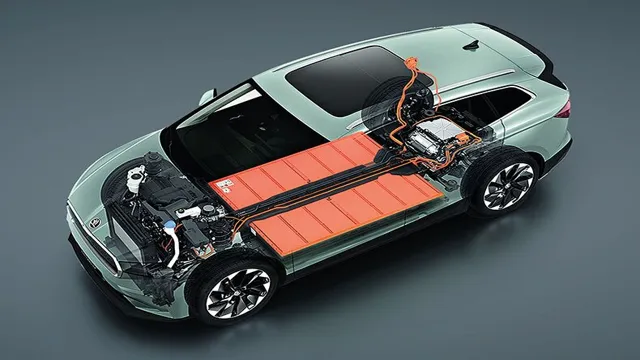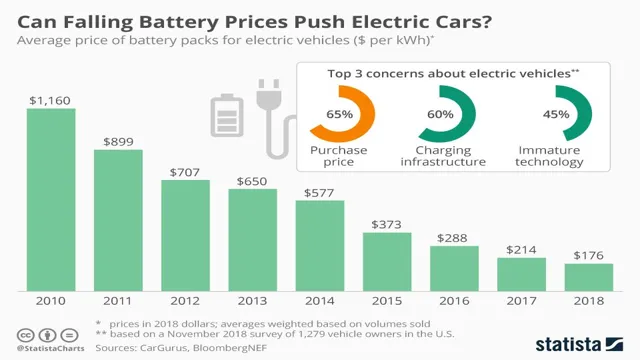Unveiling the Mysteries Behind Electric Car Batteries: How They Work and Power Your Ride
Electric cars are quickly becoming the go-to choice for environmentally conscious drivers. However, how much do we really know about the technology that powers them? While many are aware that electric cars rely on batteries, few people have a good understanding of how they actually work. In this blog, we’ll explore the complex inner workings of electric car batteries and provide a clear explanation of the science behind them.
Whether you’re an electric car enthusiast or simply curious about the technology, we’ll break it down in a way that’s easy to understand. So, sit back and prepare to learn something new about the fascinating world of electric car batteries!
Introduction
Are you curious about how electric car batteries work? Let’s dive in! An electric car battery stores energy that powers the vehicle’s motor. It’s made up of many individual battery cells that work together to produce this power. These cells are typically made of lithium-ion and have a cathode, anode, and electrolyte.
When the battery is charging, the lithium ions move from the cathode to the anode through the electrolyte, storing energy. When the car is in use, the process is reversed, and the ions move from the anode to the cathode, creating the power that moves the car. The coordination and function of these individual cells rely on electronic controls that optimize their performance.
The electric car battery has a significant impact on the vehicle’s range, power, and weight, making it a crucial component in the world of electric cars.
What is an electric car battery?
An electric car battery is a rechargeable battery used to power electric vehicles. These batteries typically use lithium-ion cells, which provide a high energy density and a long lifespan. They work by storing electrical energy that can be used to power an electric motor and move the vehicle.
The capacity of an electric car battery is measured in kilowatt-hours (kWh) and determines how far the vehicle can travel on a single charge. One of the advantages of electric cars is their ability to regenerate energy through braking, which helps to extend the range of the battery. However, electric car batteries are also one of the most expensive components of the vehicle, which can make them a significant investment for car buyers.
Additionally, the charging infrastructure for electric cars is still developing, which can make it challenging for drivers to find charging stations when they’re on the road. Despite these challenges, electric car batteries are an important technology that is helping to reduce greenhouse gas emissions and increase the sustainability of transportation.
How does it differ from a traditional car battery?
car battery, difference, traditional Introduction: A car battery is the heart of a vehicle’s electrical system. It provides the spark to start the engine and powers all of the electronic components. When it comes to car batteries, there are two types: traditional and modern.
The traditional type has been around for decades, while the modern version is relatively new on the market. So what exactly sets them apart, and how do they differ? Let’s explore the differences between a traditional car battery and a modern one.
Battery Makeup
Have you ever wondered how an electric car battery works? Electric car batteries are made up of thousands of individual cells, each containing positive and negative electrodes, a separator, and an electrolyte. When the battery is charged, electrons flow from the positive electrode, through the separator and electrolyte, and onto the negative electrode, creating an electrical current. When the battery is discharged, this process is reversed, and the electrons flow from the negative electrode, through the separator and electrolyte, and onto the positive electrode.
The size and power output of an electric car battery depend on the number and type of cells used. Lithium-ion batteries are commonly used because of their high energy density and long lifespan, but other types of batteries, such as nickel-metal hydride and lead-acid, are also used in some electric vehicles. Overall, the electric car battery is a complex and fascinating piece of technology that is propelling the world towards a more sustainable, emissions-free future.
What are the components of an electric car battery?
Electric car batteries are made up of several components, with the most important being the individual cells that make up the battery. These cells are typically made up of a cathode, an anode, a separator, and an electrolyte. The cathode and anode are made up of different metals, with the cathode typically being made of nickel, cobalt, or manganese, and the anode being made of graphite.
The separator is used to keep the two electrodes apart, while the electrolyte is used to facilitate the movement of charged particles between them. Additionally, electric car batteries often have a battery management system that helps to regulate the battery’s charge and discharge cycles, as well as other important battery parameters. Overall, the makeup of an electric car battery is complex, but essential in providing the power and range necessary for electric vehicles to be a practical alternative to traditional gasoline-powered vehicles.
How are they arranged?
Battery makeup refers to the arrangement of batteries in a particular device. In simple terms, it is how the batteries are placed in a device. The arrangement could either be series or parallel, and it largely determines a device’s voltage and power.
Series arrangement involves connecting the batteries end-to-end such that the positive terminal of one battery connects to the negative terminal of the other. The voltage increases, but the power or capacity remains the same. On the other hand, parallel arrangement involves connecting the batteries side-by-side such that the positive terminals are connected, and likewise, the negative terminals.
The voltage remains the same, but the power or capacity increases. Therefore, the battery makeup of a device is a crucial factor in determining its functionality and performance. By understanding how batteries are arranged in a device, users can determine the optimal use of the device and how best to get the most out of their batteries.
Battery Performance
When it comes to electric cars, one of the biggest considerations for drivers is battery performance. But how does an electric car battery work? Essentially, the battery is made up of multiple cells, each containing positively charged cathodes and negatively charged anodes. During charging, electrons flow from the cathode to the anode, while during use, the electrons flow in the opposite direction, creating an electrical current.
The battery management system ensures that the charging and discharging process happens at optimal levels to maximize the battery’s lifespan. Factors such as temperature and driving habits also play a role in battery performance, so it’s important for electric car drivers to be mindful of these factors to optimize their driving experience. Overall, electric car batteries are complex but effective systems that allow for sustainable and eco-friendly transportation.
What affects the battery’s performance?
When it comes to battery performance, there are several factors that can affect how long your battery lasts. Firstly, the device’s usage plays a crucial role. If you’re constantly streaming videos or playing mobile games, your battery’s lifespan will be significantly shorter.
Similarly, the age of your battery is also a vital factor. Over time, batteries lose their capacity to retain a charge, which means they don’t last as long as they used to. Temperature is another critical factor; high temperatures can cause your battery to deteriorate faster.
Lastly, the type of charger you use can affect battery performance; using a low-quality charger can damage your battery and shorten its lifespan. It’s essential to keep these factors in mind to ensure that your battery lasts as long as possible.
How can you maximize the battery’s life?
Battery Performance Maximizing the battery’s life is crucial for all device users. An efficient battery depends on several factors, including the temperature, usage, and charging habits. Firstly, it’s important to avoid exposing the battery to extreme temperatures.
High temperatures can cause the battery to lose capacity and shorten its overall lifespan. Secondly, it’s essential to use the device’s battery appropriately. Overusing or underusing the battery can affect its performance, and a balanced usage is always recommended.
Additionally, charging habits can play a significant role in maximizing the battery’s life. It’s best to charge the device when the battery is low, rather than overcharging it or charging it frequently. Finally, removing unused apps and features can help reduce the device’s workload, allowing the battery to last longer with each charge.
With these tips in mind, you can ensure optimal battery performance and extend your device’s lifespan.
Conclusion
In summary, electric car batteries are like superheroes for the modern age. They may not have capes or superhuman strength, but they are able to power cars silently and efficiently, saving both the planet and your wallet. By harnessing the power of chemistry and electricity, these batteries provide drivers with reliable and sustainable transportation.
So next time you see an electric car cruising down the highway, remember that it has a powerful, eco-friendly sidekick helping it along the way.”
FAQs
What is an electric car battery and how does it work?
An electric car battery is a rechargeable battery that powers an electric motor to propel the car. It works by converting chemical energy into electrical energy, which is then used to power the motor.
What types of batteries are used in electric cars?
There are several types of batteries used in electric cars, including lithium-ion, nickel-metal hydride, and lead-acid batteries. Lithium-ion batteries are the most commonly used because they are lightweight and have a high energy density.
How long does an electric car battery last?
The lifespan of an electric car battery depends on several factors, including the type of battery, the climate, and the driving habits of the owner. Generally, electric car batteries can last anywhere from 8 to 20 years.
Can electric car batteries be recycled?
Yes, electric car batteries can be recycled. The process involves breaking down the battery into its component materials (such as lithium, nickel, and cobalt) and reusing them to make new batteries or other products. Recycling electric car batteries helps to reduce waste and conserve natural resources.





